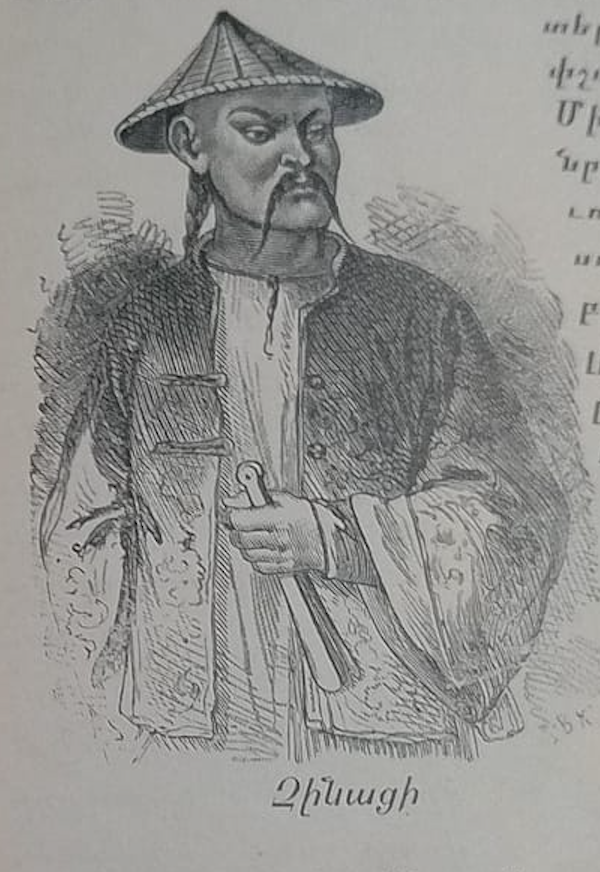
The general representation of Chinese people in an Armenian early- 20th century publication
Several photographs have recently surfaced on social media platforms that depict pages extracted from an early 20th-century Armenian publication that was printed in Tiflis, the capital city of Georgia, where a thriving Armenian community was present during the period. The book was purposed to be used as a textbook for Armenian schools and an additional resource for those who wanted to gain a major in the discipline of Armenian history. The author is Avetick Ter-Hakobian, the former teacher of Armenian geography at the Nersisian School, an Armenian higher education institution in the city of Tiflis, active from 1824 to 1924.
The publication briefly overviews Armenia’s physical, ethnographic, and political geography, describing the architectural monuments, demography, and national-political situation at the beginning of the 20th century. Its pages are adorned with maps and illustrations that complement the text.
Furthermore, the publication also includes a depiction of a Chinaman, with a confident posture and facial expression, as a general representation of the Chinese ethnicity. The Chinaman in the illustration has typified Chinese physique, with accentuated cheekbones, a distinctive mustache, and plaited hair, known as “queue.” He is shown wearing a pointed hat, which is known as a sedge hat, rice hat, paddy hat, or coolie hat. He is holding a fan in his hand, another accessory that is typical for Asian people. The traditional jacket he is wearing resembles the “Tang suit” with knot buttons, a loose shape, and a mandarin collar. This approach in representation corresponds to the engravings, prints, and watercolors produced by European and later American travelers, members of expedition groups, or artists, dating back to the 17th to 19th centuries, capturing the appearances, distinct attires, traditions, and customs of the non-Western people to inform and enlighten their local audiences.
The text accompanying the illustration reveals that despite the considerable geographic distance between Armenia and China, Chinese inhabitants were present in Armenia. According to the author, the Chinese people initially arrived in the region under the name “Orbelians,” settling in Georgia before moving to Armenia. Later, a second group of Chinese people arrived in Armenia under the guidance and leadership of the princes named Mamik and Konak. The Armenian king, Tiridates, extended a warm welcome to them and provided them with a place of settlement in the Taron province of Armenia, which Indians had partially occupied. Tiridates also appointed a salary for the Chinese newcomers. Over time, as the publication claims, the Chinese population in Taron grew in size and adopted Christianity as their religion, with the Mamikonian princely family tracing their origins to this group. Presently, only a few Chinese people reside in different Armenian towns.
Although the text lacks references and scientific accuracies, it continues the lineage of the theory, which stems from Movses Khorenatsi, a prominent Armenian historian from late antiquity and the author of the History of the Armenians, who stated that Mamikonian princes originated from “Chenk” or “Chen” lands, which may refer to China.
This publication is of significant value as it provides insights into the perceptions and attitudes of Armenians toward Chinese people during the specified period and the intercultural dynamics between the two nations.










